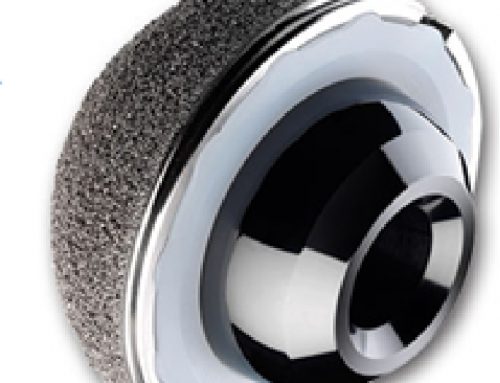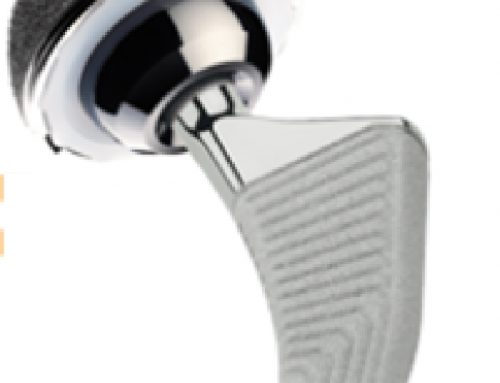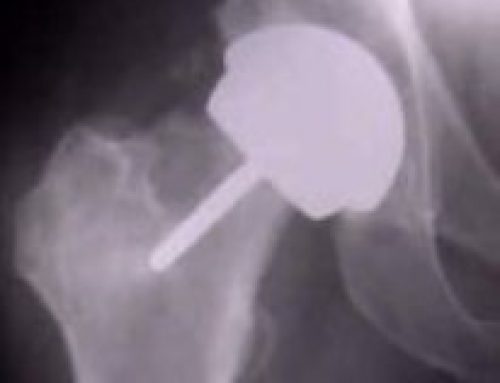Birmingham Hip Resurfacing System
Phillip Schmitt, D.O. is currently the third busiest surgeon for hip resurfacing in the country. He specializes in Birmingham Hip Resurfacing, an innovative procedure that replaces the damaged surface of the hip joint with a high-carbide, cobalt chrome.
BIRMINGHAM HIP◊ Resurfacing
BIRMINGHAM HIP◊ (BHR◊) Resurfacing System
An alternative to total hip replacement. 
Candidates for hip resurfacing
Hip resurfacing is intended for younger active male patients in need of a hip replacement. The suitability of resurfacing as an appropriate treatment for you should be determined by your surgeon, including by a review of your bone quality and the size of your femoral head. Please discuss your options with your surgeon.
The implant
The BHR was CE marked in January 1997 and has been implanted in hospitals in Europe since then. It was approved for use in the United States by the Food and Drug Administration in 2006.
The BHR has two parts: the femoral head (the ball) and the acetabular component (the socket).
The benefits of the BHR technique and implant for appropriate patients may be significant. The implant's head size, its bearing surfaces and its bone-sparing technique could make it the right choice for active patients. In fact, the implant's rate of survivorship for men under the age of 65 is comparable to - and in many cases, better than - standard total hip replacements after ten years of use1.
Head size
While the implant closely matches the size of your natural femoral head (hip ball), it is substantially larger than the femoral head of most total hip replacements. This increased size helps to reduce the risk of dislocation of the implant after surgery2.
Bone conservation
The BHR implant conserves substantially more bone than a total hip replacement. Since it preserves the natural femoral neck and most of the natural femoral head, a well-placed BHR reduces concerns about post-operative leg length discrepancy. Also, should you need the implant to be replaced at some point in the future, you would be a candidate for a standard hip replacement stem as opposed to needing a longer "revision" stem-type, as is often the case when a traditional total hip replacement needs to be replaced.
The procedure
Total hip replacement requires the removal of the natural femoral head and the insertion of a hip stem down the shaft of the femur. Hip resurfacing, by contrast, preserves both the femoral head and the femoral neck.
During the procedure, your surgeon will only remove a few centimeters of bone around the femoral head, shaping it to fit tightly inside the BHR implant. Your surgeon will also prepare the acetabulum for the metal cup that will form the socket portion of the ball-and-socket joint.
The femoral component is cemented over the top of the prepared femoral head like a tooth cap, and the acetabular component is pressed into place much like a typical hip replacement component would be.
Why BIRMINGHAM HIP Resurfacing?
Long-term successful outcomes around the globe:
- The Australian Orthopaedic Association National Joint Replacement Registry Annual Report 20153 showed BHR survivorship of 90.2% at 14 years follow-up, the longest of any resurfacing device.
- BHR continues to be the most implanted resurfacing device world-wide and is the only hip resurfacing device with 14 years of registry data.
- Great Britain's Oswestry Outcomes Centre's patient registry revealed BHR 10-year survivorship of 95.4%, with 98.6% of patients rating their opinion of the experience as pleased or extremely pleased4.
Important safety notes
Any surgery presents some risks for the patient. There are potential risks with hip resurfacing surgery such as fracture, infection, loosening, dislocation and wear that may result in the need for additional surgery. Females should not be implanted with the BHR. You should always follow your surgeon's recommendations as regards what you should and should not be doing after you have been implanted with a BHR. Early device failure, breakage or loosening may occur if you do not follow your surgeon's recommendations on activity level. Early failure can happen if you do not guard your hip joint from overloading due to activity level, failure to control body weight, or if you experience impact accidents such as falls. Hip resurfacing surgery is intended to relieve hip pain and improve hip function. Talk to your doctor to determine what treatment may be best for you.
References
- Data on file, Smith & Nephew.
- S. S. Jameson, D. Lees, P. James, Serrano-Pedraza, P. F. Partington, S. D. Muller, R. M. D. Meek, M. R. Reed. Lower rates of dislocation with increased femoral head size after primary total hip replacement. J Bone Joint Surg 2011;93-B:876-80.
- Australian Orthopaedic Association National Joint Replacement Registry Annual Report. Adelaide: AOA; 2015.
- Robinson E, Richardson JB, Khan M. MINIMUM 10 YEAR OUTCOME OF BIRMINGHAM HIP RESURFACING (BHR), A REVIEW OF 518 CASES FROM AN INTERNATIONAL REGISTER. Oswestry Outcome Centre, Oswestry, UK.
Disclaimer
The information presented about the BHR is for educational and informational purposes only. It does not constitute and is not a substitute for medical advice. Only your physician can advise whether the BHR may be suitable for you and your condition. You should consult your physician about whether the BHR constitutes an appropriate treatment option for you, and about the associated risks, benefits, contraindications, warnings and possible outcomes. Not everyone who receives a product or treatment will experience the same or similar results; results may vary depending on a number of factors, including each patient's specific circumstances and condition, and compliance with post-operative recommendations. Smith & Nephew is not responsible for the selection of any treatment by a physician to be used on a particular patient. Smith & Nephew makes no representations, warranties, guarantees or assurances as to the availability, accuracy, currency or completeness of the information presented or its contents. Smith & Nephew shall not be liable for any damages or injury resulting from your reliance on any information provided. Your use of the information is at your own risk.
Dr. Philip Schmitt
Offers The Birmingham Hip Resurfacing System
Bone and Joint Specialists Orthopaedic Hip Surgeon Dr. Philip Schmitt specializes in the treatment of hip injuries and hip disorders, including arthritis and trauma. He understands the importance of getting you back to an Active Lifestyle.
Dr. Schmitt can evaluate and diagnose your hip pain injuries and conditions, and provide a customized treatment plan that is exclusive to you. He will explore conservative nonsurgical methods first, such as physical therapy, including individualized hip exercises to relieve your pain. However, if surgery is necessary to allow you to continue an active lifestyle, Dr. Schmitt will employ specialized techniques that are minimally invasive and can lead to quicker recovery times.















